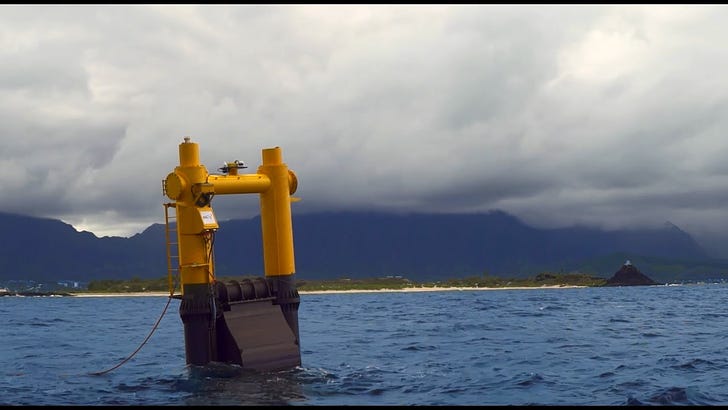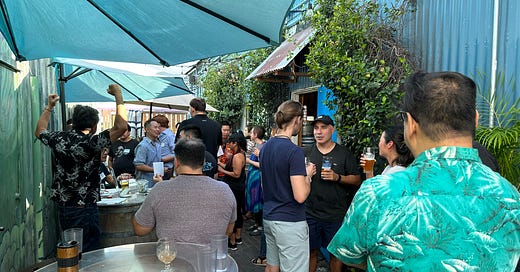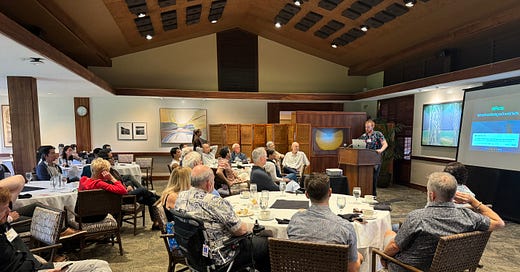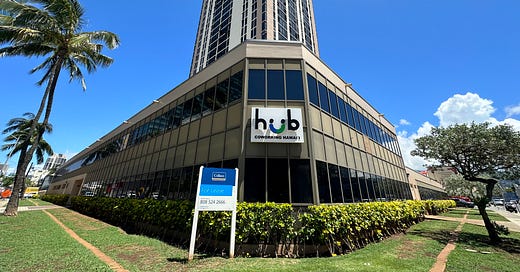
Catching the wave of ocean power
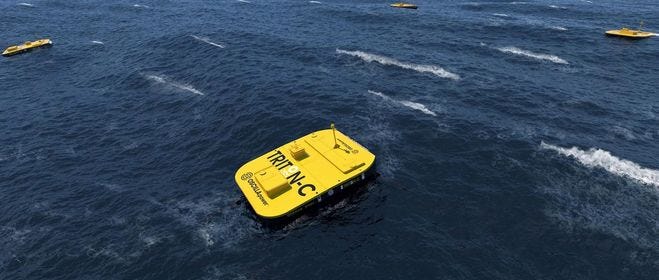
People in Hawaii innately know the power of the ocean. From surfing down the towering 120-foot faces of waves at Pe'ahi (a.k.a. Jaws), to barricading homes and businesses against storm surges, to simply sitting on the shore and watching the endless cycle of swells and lulls stretching out to the horizon.
It should be no surprise, then, that Hawaii is one of the nation's leading natural laboratories for testing wave power technology. Just last month, the University of Hawaii received $6 million to continue its role in wave power research. And this weekend, a new wave energy system left Seattle to be put to the test here in the islands.
You may be surprised to learn, however, that large-scale wave energy generation is relatively new. After all, people have been trying to tap into the power of ocean waves since the 1800s, and some of the basic mechanisms used today were developed in the 1940s.
Yet, the first commercial wave energy system didn't come online until the year 2000 in Scotland, and the first multi-generator wave farm came online in Portugal in 2008... shutting down two months later.
Ocean power has massive potential. Oceans cover 71 percent of the Earth's surface, and are the single largest retainer of the sun's energy. Whether tapping stored heat or waves, ocean power is free, clean, and available 24 hours a day.
In the United States, more than 50 percent of the population lives within 50 miles of a coastline. (Hawaii is pretty much all coastline.) Some researchers say the ocean can provide enough power to meet a quarter of America’s energy needs.
But it'll take quite a bit of work to develop the technology to do so.
Ocean power in Hawaii

"Wave Energy Resources for Representative Sites Around the Hawaiian Islands," Hawaii Natural Energy Institute, October 2010. Report.
On the heat side of the equation, Hawaii is home to the world's first Ocean Thermal Energy Conversion (OTEC) power plant, one of many projects based at the Natural Energy Laboratory of Hawaii on the Kona side of Hawaii Island.
As for mechanical energy — driven by waves, tides, and currents — Kāneʻohe Bay is a key part of the nation's wave energy frontier.
This leading-edge research is backed by the U.S. Navy and hosted by Marine Corps Base Hawaii. In 2009, the nation's first grid-connected wave energy test site (WETS) was established, and made history when the three-berth site came online in 2015 with the installation and activation of Azura.
Azura was the first independently tested grid-connected wave energy device in the country, developed by Northwest Energy Innovations. The independent testing entity? The University of Hawaii, which was responsible for data collection, analysis, and reporting to the Navy and the U.S. Department of Energy.
The 20kW prototype was in the water for 18 months, and saw 98 percent operational uptime, energy conversion efficiency of over 50 percent, and weathered multiple hurricanes and waves of more than 7 meters high.

The following year, the Norwegian-designed BOLT Lifesaver took its turn in the spotlight. During its one-year deployment, the device generated 22,000 kWh of wave energy, with an average output of 3.2kW, and its longest continuous power export lasting 200 days.
The BOLT Lifesaver was upgraded before returning for a second test in 2018.
And at the end of 2019, the world's largest wave energy device arrived in Hawaii. Funded by the government of Ireland and built in Oregon, the OE35 is as tall as a three-story building, more than 35 meters long, and can generate 500kW, enough clean energy to power 500 homes.
The latest contender
Now en route to Hawaii is the Triton-C, which has been under development for more than a decade and is backed in part by the State of Washington.
What sets the Triton-C apart is that it's design: a "multi-mode point absorber" that uses all parts of the wave to produce power. Specifically, it can extract energy from ocean waves in all six degrees of freedom (heave, pitch, surge, roll and yaw), allowing for better energy capture across a wider range of ocean conditions.
The Triton-C is also designed to be easily and quickly deployed without specialized vessels. This will allow the system to provide resilient, independent, and self-sufficient power to remote and isolated communities.

The Triton-C is intended to be competitive in locations that are off-grid and diesel powered where the power cost can be excessive. Credit: Oscilla Power
Wave and ocean energy is relatively consistent and predictable, ideal for electrical grid management. And combined with wind energy and solar energy (and geothermal, maybe), could mean a sustainable and clean future for the Aloha State.


